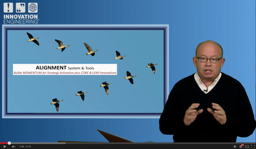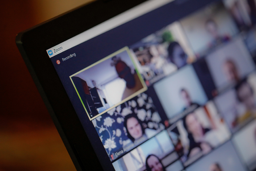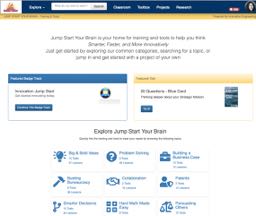Innovation is About the Things You Don’t Do
Leading and doing innovation is about choices. The big choice to do innovation could almost be considered the easy one. Innovation is shown to make a meaningful impact to a bottom line, to a company’s return, to employee pocketbooks, and to morale. Doing the new thing isn’t necessarily hard, it’s NOT doing other things that forces you to make choices that are hard. And right now these choices are even harder.
When innovation is at stake when you have people clamoring, “We can’t work anymore! Our plates are full! Innovation is nice, but we have no time! We’re too busy!” It would be easy at that point to walk away and just put off the innovation-decision until later. Until the day when your employees come back from working from home and the crisis, we are currently experiencing and tell you, “What else can we do for you? We’ve finished all of our tasks early and we’d like to do more. We noticed that earnings aren’t what they once were so we’d like to give back a bit of our pay.” (And if you’re saying to yourself, that’s a long-shot – you’d be right.)
The responsibility you have as the leader isn’t about beating them down to do more. Right now many workers are truly drowning with work and can’t find a place to catch a breath.
Your job as the leader is to set priorities…and the biggest way to do that is to start saying no.
- Saying no to projects that are ongoing that aren’t going to make the company any new money.
- Saying no to projects that never seem to progress.
- Saying no to customers that just want a cheaper price and nothing else.
- Saying no to mediocre projects that aren’t making a big difference.
But if the “just say no” approach isn’t your style, then consider this blog from the Harvard Business Review by Tony Schwartz called “The Magic of Doing One Thing at a Time”.
You can read the article for yourself, but 2 suggestions I think are most relevant to innovators and innovation leaders – whose time and attention is constantly in demand:
1.) Do the most important thing first in the morning, preferably without interruption, for 60 – 90 minutes, with a clear start and stop time. If possible, work in a private space during this period, or with sound-reducing earphones. Finally, resist every impulse to distraction, knowing that you have a designated stopping point. The more absorbed you can get, the more productive you’ll be. When you’re done, take at least a few minute break.
2.) Establish regular, scheduled times to think more long term, creatively, or strategically. If you don’t, you’ll constantly succumb to the tyranny of the urgent. Also, find a different environment in which to do this activity – preferably one that’s relaxed and conducive to open-ended thinking.
So at the end of the day, or week, or year, or lifetime – don’t look up and realize you spent so much time on the hamster wheel you didn’t do anything meaningful. Stop doing the stuff that doesn’t get you where you need to go and start innovating.
Download this exercise that the team at the Ranch has been using for a long time – try it out your self or with your team.
What to do Next
Get Graduate-Level Innovation Education
Tuition Reimbursement
Sign up for a free account on our platform so you can sample the content before you bring it into your LMS.
Teach Staff How to Innovate Together
Rising Innovation Leaders Cohort
Train a cohort group or team to learn fundamental innovative thinking and apply it immediately on current challenges.
Innovate Now - With Experts
Recovery Strategy
Use innovative thinking and our Eureka! Inventing team to help you invent your Recovery Strategy right now!
Institutionalize Innovative Thinking in Your Organization
Jump Start Your Brain (LMS Content)
Make “Innovative Thinking” training available on-demand for your organization.



